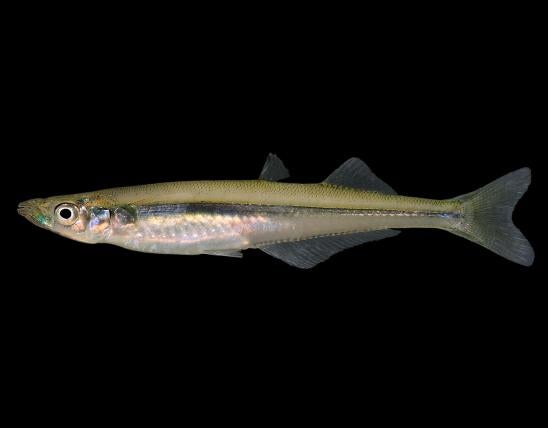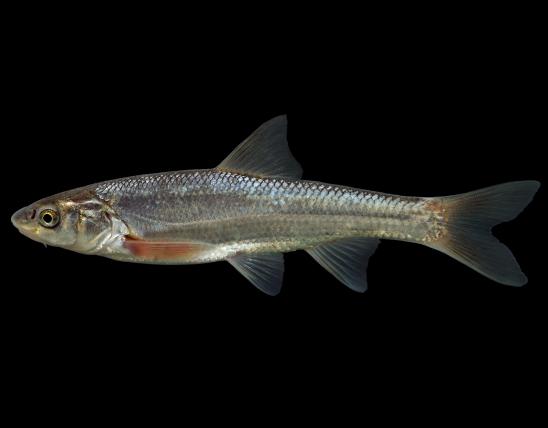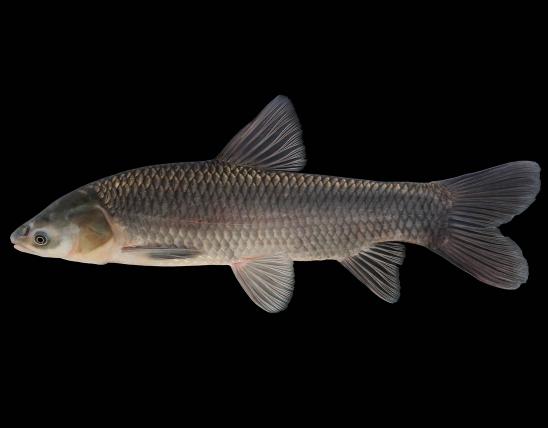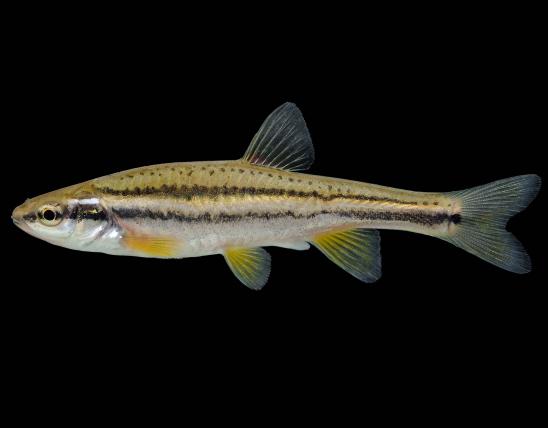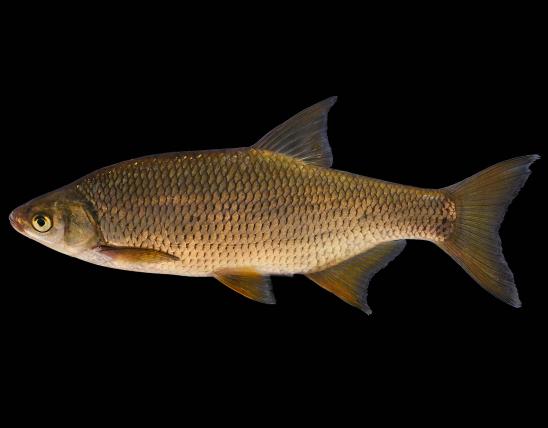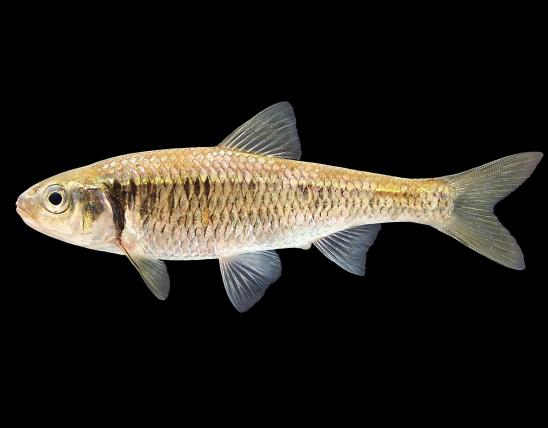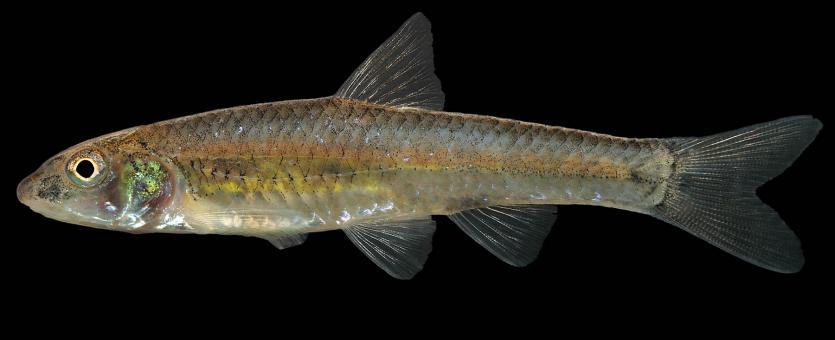
The Sabine shiner is a slender, silvery minnow with small eyes and a rather large, nearly horizontal mouth. Barbels are absent. The front of the dorsal fin base is much closer to the tip of the snout than to the base of the tail fin. The undersurface of the head is distinctly flattened. The snout is bluntly rounded, projecting slightly beyond the upper lip. The upper jaw reaches past the front of the eye. The eyes are directed slightly upward, rather than to the sides, so that the lower margin of the pupil is visible when the fish is viewed from above.
The back is pale olive yellow, without a definite streak along the midline or dark edgings on scales. The sides are silvery. The belly is silvery white. The fins are plain. Breeding males are without special colors but have small tubercles on the snout, cheeks, and jaws.
Adult length: about 2 inches; maximum about 2½ inches.

Known only from a 25-mile stretch of the Black River in Butler County, where this stream flows from the Ozark Uplands into the Southeastern Lowlands.
Habitat and Conservation
The Black River, in the stretch inhabited by this shiner, is a large, moderately clear river with a predominance of sand and small-gravel substrate. This species was collected near sandbars in slight to moderate current, and it lives on or near the bottom. It is commonly found in association with the blacktail shiner, emerald shiner, Mississippi silvery minnow, and bullhead minnow.
Food
The Sabine shiner probably feeds on aquatic animals taken from the bottom.
Status
State Endangered; a Species of Conservation Concern in Missouri. It occurs in streams from southeastern Missouri to southeastern Texas. Being a lowland species, this fish has probably never been widespread in Missouri, and its continued presence in our state requires us to protect its small amount of present and potential habitat.
Life Cycle
This species apparently spawns in the summertime. In Louisiana, the Sabine shiner breeds from early April through September, and females lay their eggs in groups at intervals during the spawning season. Most individuals mature during their second summer of life, and few survive beyond their third summer.
Human Connections
You can learn a lot from a name. This minnow was first described from the Sabine River in Texas (it's pronounced suh-BEAN). Spanish explorers called the river “Sabine” because that was their word for the cypress trees lining its banks. The Black River in our state, home of this fish, is a lowland river, too.
Ecosystem Connections
The Sabine shiner and its interwoven community of plants and animals are special creatures of a special world, perfectly suited not just to an aquatic environment, but to the peculiar transition zone between Ozark uplands and Bootheel lowlands. Missouri’s southeastern lowlands are home to a fantastic array of plants and animals found nowhere else in the state.

























